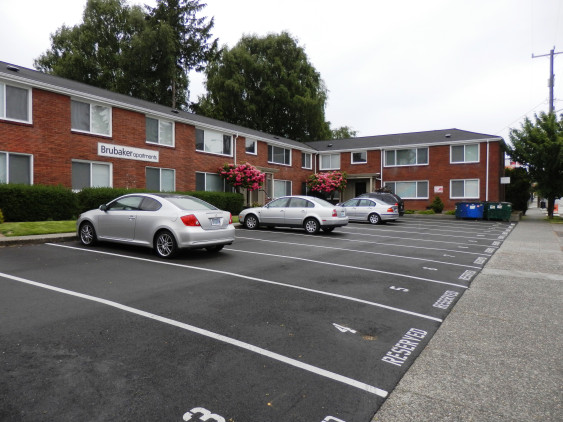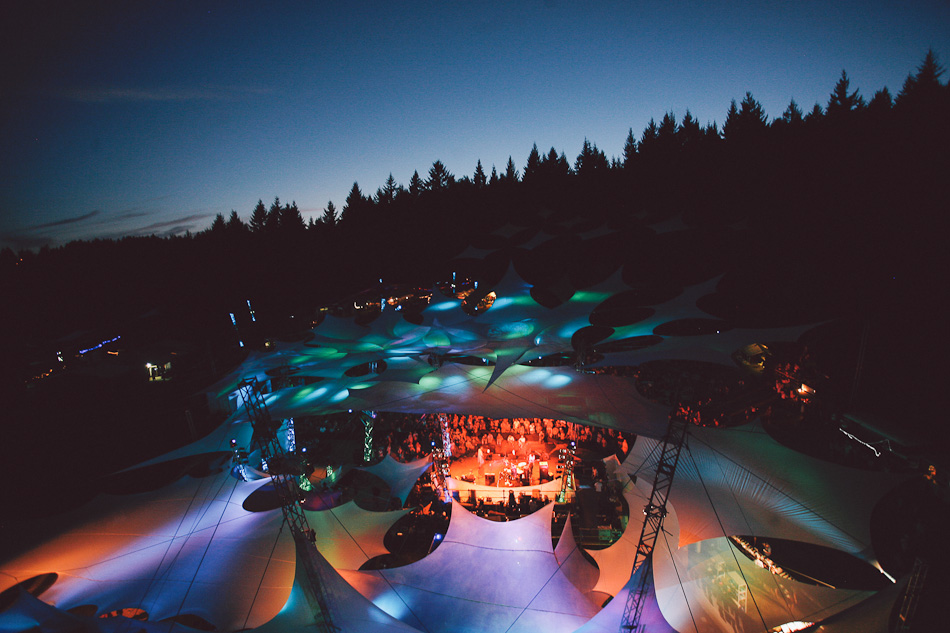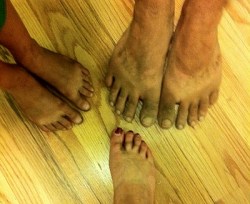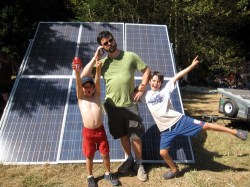Music festivals have become big business in the music industry. According to CBS News, “the festival scene is thriving, with concert ticket sales tripling from $1.5 billion to $4.6 billion between 1999 and 2009.” Just about every city and genre has gotten in on the action, hungry for a piece of the pie. Last year, the Coachella festival alone took in $47 million.
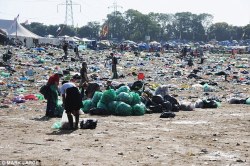
Mark LargeTypical festival aftermath, Glastonbury 2011.
Most festivals, however, remain fairly unpleasant on a human level. It’s nice to catch multiple bands in one location, but attendees are milked mercilessly, crammed in like sardines, plied with $8 beers and $12 burritos, herded from one generic stage to another past corporate advertisements and scowling security guards, and surrounded, everywhere, always, by trash: plastic water bottles and soda cups and greasy styrofoam.
At least one festival is trying to do things differently. It takes place over three days in August on Pendarvis farm, in Happy Valley, Ore., about 20 minutes outside of Portland. Like Grist, Pickathon is entering its 15th year; it was founded in 1999. And like Grist, it has grown, organically, steadily, and improbably, from modest beginnings to … well, somewhat less modest heights. It is the medium chill of festivals.
The best way to describe Pickathon (this will be my third year; I wrote about year one and year two) is that it’s a music festival made by people who love music festivals for people who love music festivals. Everything is about the experience: it’s aesthetically beautiful, safe, family-friendly, filled with musical discoveries, and clean.
I spoke with festival founder and director Zale Schoenborn last week about Pickathon’s history, its values, and its efforts to become sustainable, both ecologically and financially.
“We’ve always been focused on doing the right thing sustainability-wise,” Schoenborn said, “but as we got bigger, we started challenging some of the really big things.” One of the biggest: In 2010, Pickathon banned single-use plastic cups entirely. Instead, attendees buy a stainless steel cup made by longtime sponsor Kleen Kanteen and keep it with them all weekend (a ring is provided to attach it to a belt or pack). There are stations on site with soap and water to wash the cups.
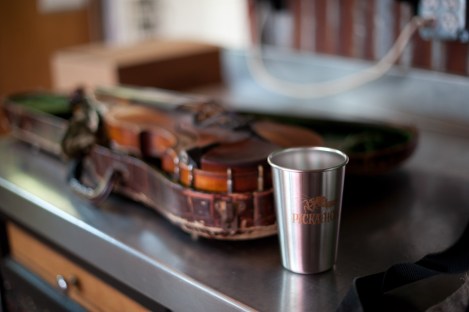
Pickathon photography crewThe famous cup.
In 2011, another big step: no more disposable food containers or silverware. Instead, attendees buy a token. Food vendors (food carts out from from Portland, including the transcendent Pine State Biscuits) take your token with your order and serve their food on plates, bowls, and silverware made of durable bamboo. When you’re done with your meal, you take the plate to the dishwashing booth and exchange it for your token. Voilà: no trash.
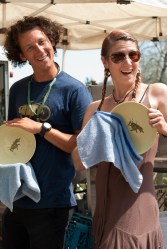
Pickathon photography crewThey love the reusable plates!
Schoenborn says each of those measures meant about a 25 percent reduction in waste per person. Best of all, the details of the system were discussed in advance with the community, the hitches worked out, so there were no nasty surprises. When I first arrived at the festival I was worried it would be a hassle, but it turns out to be virtually frictionless, as easy or easier than the alternative. The impact of the lack of trash on the feeling of the festival is hard to describe. It sounds a little silly, but it’s really true: cleanliness encourages good behavior.
The festival has also aggressively tackled the transportation issue. People who bike or take public transit can avoid the parking fee. There are shuttles from Portland running throughout the weekend and a dedicated lot for bicyclists. Schoenborn estimates that, out of roughly 7,000 people on site during the festival, around 25 percent arrive on bus or bike. There were upwards of 500 bikes on site last year and the proportion of cyclists is rising each year.
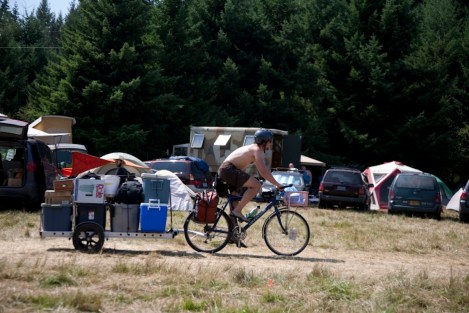
Pickathon photography crewBiking and prepared.
There’s even some talk, Schoenborn says, of getting rid of parking entirely. Imagine that: a festival with no cars.
A big chunk of the festival’s energy comes from five or six solar PV panels, one of which powers a portable phone-recharging station that saved my sanity on more than one occasion. The big stages are run on biodiesel generators. Water is still drawn from the city (Schoenborn says they want to dig wells, but haven’t been able to get the permits yet), but once on site it’s in a closed-loop system, with graywater filtered in bioswales, no wastewater going back into the sewer system.
More recently, festival organizers have been working on land and wildlife restoration, going so far as to plan all off-season work parties in the autumn to avoid disturbing the nesting season of the native birds.
As far as Schoenborn knows, no other major festival has taken up these ideas, despite their success and popularity at Pickathon. Some festivals have asked, he says, but most still view sustainability as a “necessary evil” and are forever testing tentative, incremental steps. But with something like the cups, he says, a half attempt is self-defeating. The simplicity and benefits can only be achieved by going big. Most importantly, it pays for itself. “Their first question is, ‘How much do I have to lose?'” he says. “You don’t have to lose anything! You might even break even. They’re, like, ‘That’s magic.’ And hang up.”
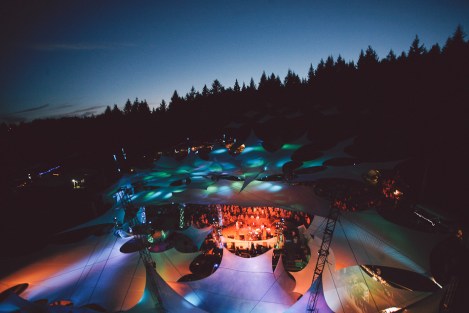
Pickathon photography crewThe main stage.
The most vexing issue the festival faces is size. Perhaps the most remarkable thing about the Pickathon experience is that, despite the fact that almost all attendees and volunteers are camped out on site for three days, it never feels crowded. At the two main stages, it’s always possible to find a space to settle in and see the music without being jostled. (Only at late-night shows in the tiny Galaxy Barn is crowding a problem. And sweat. So much sweat.) There are lines, but they are never prohibitively long. There’s always an available port-a-potty. For anyone used to the persistent, choking scrum at most music festivals, it’s luxurious. Schoenborn:
For the size land we have, we should have about five times more people. That’s what Bonnaroo does, what Coachella does, what Sasquatch does. We wouldn’t camp all 6,000 or so people all weekend; we would sell more day passes. That field can hold upward of 25,000 people on paper. That’s nuts, but that’s what a normal festival puts in that space. Conceptually, that’s how you run festival — it’s economies of scale.
Maintaining low density comes at a price. “You give up that 5X income factor,” Schoenborn says, “and it’s really hard, even with great efficiency, to make that up without raising ticket prices. That’s been the theme of our angst and the hardest part of what we’ve had to discuss with our audience.” For now, festival organizers have put a hard cap on the number of tickets sold: 3,500. With about 1,000 kids under 12 along for free and around 2,500 volunteers (an unusually large number), that’s about 7,000 people on the land. This year, ticket prices were raised by 45 percent, to $260 for a full weekend pass with camping. That’s not enough to cover the festival’s “skyrocketing costs,” Schoenborn says, and they are unwilling to ask artists to take a pay cut, but they are determined to make up the difference in “good ideas and efficiencies.”

Pickathon photography crewYounglings frolicking in the circus tent/kid area.
One of those ideas is to open up additional revenue streams through media. The festival is broadcast live and organizers are planning up to 12 30-minute videos chronicling stories and music that unfold at the festival. It has the benefit of a cinematic setting; one of the great pleasures of the festival is the sheer physical beauty of it. “All the other live festivals have a black, square box” for a stage, says Schoenborn. “We have no boxes, no normal stages. We design every space as a sculpture or a theme park for music fans.” Most famously, the audience at the main stage is shaded by one of the biggest tension-fabric structures in the world, an undulating, multicolored series of sails that is breathtaking to behold.

Pickathon photography crewTension fabric structures undulate in the wind, mesmerize stoners.
And then there’s the Woods stage, which looks like it grew out of the forest itself, surrounded by a perfect amphitheater lined with hay bales for seating. (Blitzen Trapper melted my face off there last year.)
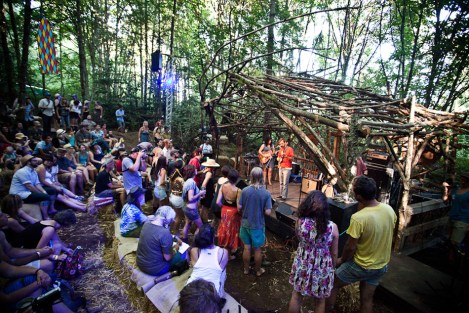
Pickathon photography crewThe Woods stage, a favorite of every artist who plays on it.
One especially cool part of the festival: Every band plays at least twice, on different stages, so with some careful planning it’s possible to see them all. This year, Schoenborn says, Canadian artist Feist is bringing two bands, one for each stage she’ll play on.
“We’ve been having interesting conversations with people from L.A., who are fascinated with us,” Schoenborn says. “They can’t believe there’s something that has this much content and storyline that isn’t manufactured. They spend so much money trying to manufacture this stuff.”
Whether that delicate balance between human communion and creativity, financial stability, and ecological sustainability can be maintained is an open question, but Schoenborn is optimistic. The festival is a still a family affair — his mom runs the volunteer program and his brother is in charge of media — but it’s got a growing and loyal community behind it. Artists love playing there and most of them stick around to watch. Some are so taken by the atmosphere that they return to the farm to record. “The Decemberists did their No. 1 record there,” says Schoenborn. “Bombadil did a record here. Typhoon did a record there. The drummer for Typhoon couldn’t get enough and has been living onsite in a small pumphouse in the woods ever since.”
“He’s still there.”
